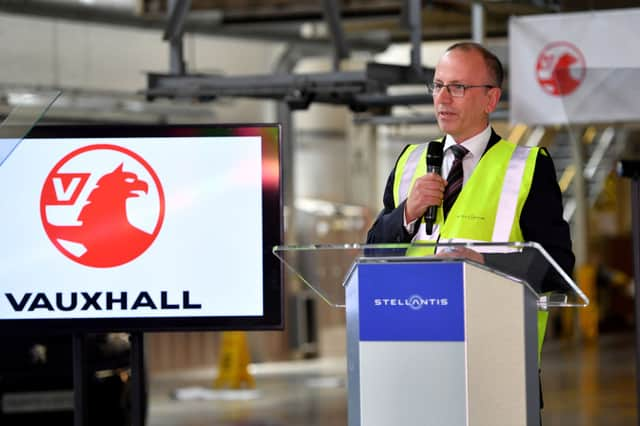Who owns Vauxhall? Stellantis ownership explained - which other car brands does company own?
and live on Freeview channel 276
Vauxhall owner Stellantis has sent shockwaves through the UK’s automotive industry by saying that it could be forced to close its British production facilities unless the government strikes a new agreement on post-Brexit trade.
The global brand warned that legislation due to come into effect in 2024 could render its operations in the UK unsustainable as new tariffs are applied to components and vehicles exported to the EU. These comments carry huge weight as, not only does Stellantis own one of the UK’s oldest car brands, but it’s also among the world’s biggest car groups.
Advertisement
Hide AdAdvertisement
Hide AdWho is Stellantis?
The Stellantis group was created in 2021 when the PSA and Fiat Chrysler groups merged and, as a result of numerous previous mergers, now owns brands building everything from tiny urban electric cars to luxury 4x4s and supercars.
PSA acquired Vauxhall in 2017 when it bought the British marque and its European twin Opel from American giant General Motors. Under GM, Vauxhall/Opel struggled but since the PSA takeover have seen their fortunes improve thanks to a host of new models built using shared platforms and components.
The Stellantis deal was the last in a long-running series of mergers and buyouts that started when the original PSA group was formed by the merger of two of France’s largest car brands - Citroen and Peugeot - in 1976 - and expanded with the purchase of Vauxhall/Opel. In 2021 PSA agreed the deal with Fiat Chrysler Automobiles - itself a result of the merger of the Italian and American groups in 2014 - adding a number of other European and American marques and rebranding as Stellantis.


Stellantis is now the fourth largest automotive group in the world - behind only Toyota, Volkswagen Group, and Hyundai-Kia - and comprises 14 brands:
Advertisement
Hide AdAdvertisement
Hide Ad- Abarth
- Alfa Romeo
- Chrysler
- Citroën
- Dodge
- DS Automobiles
- Fiat
- Jeep
- Lancia
- Maserati
- Opel
- Peugeot
- Ram
- Vauxhall
UK factories
Stellantis has manufacturing plants in more than 30 countries around the world, including two in the UK. Its Luton plant opened in 1905 and continued to build passenger cars until 2002. It is now a specialist commercial vehicle site and produces the combustion-engined versions of Vauxhall Vivaro, Citroën Dispatch, Citroën Jumpy, Peugeot Expert and Fiat Scudo vans.
Ellesmere Port on Merseyside was once the home of the Viva, Chevette and Astra but passenger car production ended there in 2022 as Stellantis moved Astra manufacturing to its plant in Rüsselsheim, Germany. It is now responsible for electric versions of Stellantis vans and MPVs but the latest comments from Stellantis bosses casts doubts over the long-term survival of the site if a better trade agreement isn't reached.
Electric strategy
Many of the Stellantis brands are at the forefront of the shift towards electric cars, adding weight to its warnings over the impact of post-Brexit trade.
Vauxhall will move to an all-electric model range by 2028 and the group aims for 100% of sales across all brands in Europe to be EV by 2030. By the end of 2023, it will produce more than 30 EVs across its brands and aims to have 47 pure EV models by the end of 2024.
Advertisement
Hide AdAdvertisement
Hide AdLast year it was Europe’s biggest producer of electric commercial vehicles and the second largest maker of electric vehicles overall.
It also has plans for five battery “gigafactories” - two in the US and three in mainland Europe, but none in the UK, highlighting the issues British vehicle manufacturing faces against fierce global competition.
Comment Guidelines
National World encourages reader discussion on our stories. User feedback, insights and back-and-forth exchanges add a rich layer of context to reporting. Please review our Community Guidelines before commenting.
